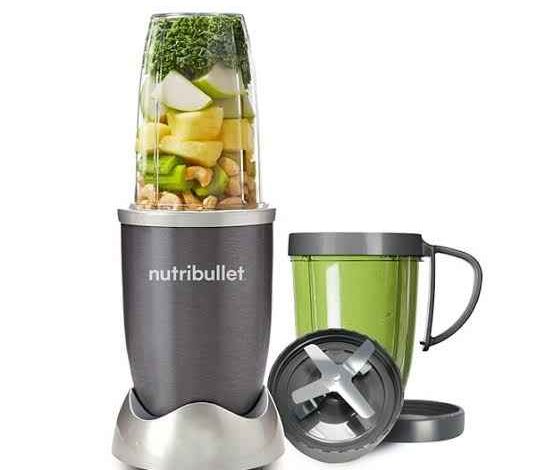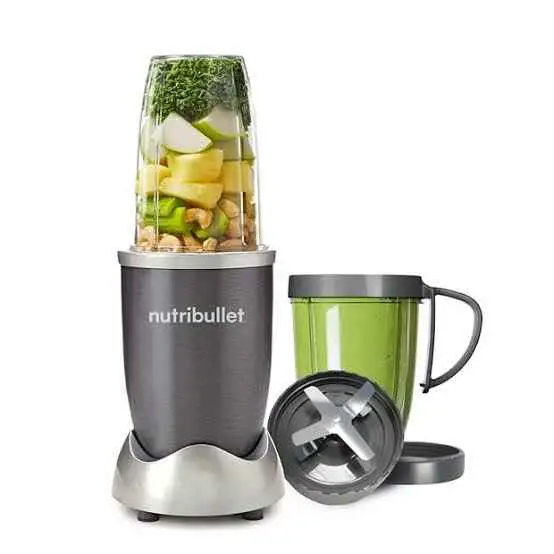How to Grind Coffee Beans in a NutriBullet

Ever woken up craving fresh coffee, only to realize you have whole beans but no grinder? Maybe you’ve glanced at your NutriBullet and thought, Can this powerful blender handle the job?
The short answer: Yes, but it depends on how precise you want your grind to be.
Grinding coffee is all about consistency—a crucial factor that determines how well your coffee brews. If the grind is too coarse or too fine, it can ruin the flavor. Traditional coffee grinders, especially burr grinders, are designed to create uniform grounds. The NutriBullet, however, is built for smoothies, not coffee beans.
So, is it a good alternative or just a last-resort fix? Let’s break it down and see if it’s worth using for your morning brew.
Can You Use a NutriBullet for Coffee Grinding?
Yes, you can grind coffee beans in a NutriBullet, but should you? That depends on what you’re looking for.
A NutriBullet is a high-speed blender with sharp blades that slice through food at thousands of RPMs. While it can break down coffee beans, its design isn’t optimized for creating the consistent grind size needed for balanced coffee extraction.
Here’s what you should consider before using a NutriBullet for coffee beans:
- Blade Type Matters – The milling blade (flat blade) works best for grinding dry ingredients like coffee beans. If you only have the standard extractor blade (cross blade), it will still work, but the grind may be less uniform.
- Grind Consistency Issues – Unlike a burr grinder, which crushes beans to an even size, the NutriBullet chops them into varying sizes, leading to an inconsistent grind.
- Heat Generation – High-speed spinning creates friction, potentially warming the beans and altering their flavor before you even brew them.
So while a NutriBullet can grind coffee, the quality of the grind may not be ideal, especially for espresso or pour-over methods that require precision.
NutriBullet vs Coffee Grinder: How Do They Compare?
If you’re deciding whether to use a NutriBullet or invest in a real coffee grinder, proper comparison will help you decide if it’s a viable alternative.
| Feature | NutriBullet Blender | Blade Coffee Grinder | Burr Coffee Grinder |
|---|---|---|---|
| Blade Type | Flat or extractor blade | Rotating blade | Burr discs |
| Grind Consistency | Inconsistent | Uneven | Very precise |
| Heat Generation | Can heat beans | Low heat | Minimal heat |
| Control Over Grind Size | Limited | Limited | Full control |
| Best For | Quick fixes, coarse grinds | Basic coffee brewing | Espresso, pour-over, French press |
A burr grinder is the best tool for coffee because it crushes beans between two burrs, ensuring an even grind. In contrast, blade grinders (including the NutriBullet) chop the beans, resulting in uneven particle sizes. This inconsistency can lead to over-extraction (bitter taste) or under-extraction (weak coffee).
That said, if you only need a coarse grind—for French press, cold brew, or drip coffee—a NutriBullet can still be useful.
Best Way to Grind Coffee in a NutriBullet

If you decide to grind coffee beans in a NutriBullet, technique matters. Doing it incorrectly can lead to inconsistent grounds, overheating, or even damage to your machine. Follow these steps to get the best results:
1. Choose the Right Blade
- If you have a milling blade (flat blade), use it—it’s designed for dry ingredients like coffee and spices.
- If you only have the extractor blade, it will still work but won’t be as effective.
2. Work in Small Batches
- Overloading the cup leads to uneven grinding. Stick to ¼ to ½ cup of beans at a time.
3. Use Pulse Mode
- Instead of holding the button down, use short pulses (1-2 seconds each).
- This prevents overheating and helps control the grind size.
4. Shake Between Pulses
- Every few pulses, remove the cup, shake it, and reposition the beans.
- This helps ensure all the beans get evenly ground.
5. Sift for Consistency
- If you have a sifter, use it to separate larger chunks and re-blend them.
- This extra step improves uniformity and gives you better results.
Using these techniques, you can get a usable grind for most brewing methods, but for espresso, a burr grinder is still the better choice.
Does NutriBullet Work as a Coffee Grinder? Pros and Cons
✅ Pros of Using a NutriBullet for Coffee Grinding
✔ Convenient – If you already own a NutriBullet, no need for extra appliances.
✔ Faster Than Manual Grinding – Much quicker than crushing beans with a mortar and pestle.
✔ Cost-Effective – If you grind beans occasionally, it saves you from buying a separate grinder.
❌ Cons & Challenges
✖ Inconsistent Grind – Uneven grounds can affect how your coffee extracts.
✖ Heat Generation – Can slightly “cook” the beans, altering their natural flavor.
✖ Blade Wear & Tear – Not designed for dry grinding, which may dull the blades over time.
The NutriBullet works best for medium-coarse grinds, making it suitable for French press, cold brew, and standard drip coffee. But for espresso or pour-over, where precision matters, a proper grinder is worth the investment.
How to Grind Coffee Beans Without a Grinder: Alternative Methods
No coffee grinder? No NutriBullet? No problem. Here are some other ways to grind coffee beans:
1. Blender
- Similar to a NutriBullet but with a larger container. Works, but may require more manual shaking.
2. Mortar and Pestle
- A traditional but effective method. Requires some elbow grease but allows more control over grind size.
3. Rolling Pin or Hammer
- Place beans in a sealed bag and crush them. Works best for coarse grinds.
4. Food Processor
- Works similarly to a large NutriBullet but may not grind evenly.
These methods aren’t perfect but can help in an emergency.
Is a NutriBullet Good for Grinding Coffee Beans? Final Verdict
A NutriBullet can grind coffee beans, but it’s not the best tool for the job. It’s useful in a pinch, especially for coarse to medium grinds, but if you want consistent, high-quality coffee, a burr grinder is the way to go.
When to Use a NutriBullet for Coffee Grinding:
✔ If you don’t have a grinder and need a quick solution.
✔ If you’re making French press, cold brew, or standard drip coffee.
✔ If you don’t mind a bit of inconsistency in grind size.
When to Invest in a Burr Grinder Instead:
✔ If you drink coffee daily and want the best flavor.
✔ If you make espresso, pour-over, or Aeropress, where grind precision is crucial.
✔ If you want long-term durability and consistency.
If you have a NutriBullet, try the pulse method and see how it works for you. But if coffee is a serious part of your routine, investing in a burr grinder will make a world of difference in taste and quality.
After reading through, would you use a NutriBullet to grind coffee, or would you prefer a proper grinder? Let me know your thoughts!

